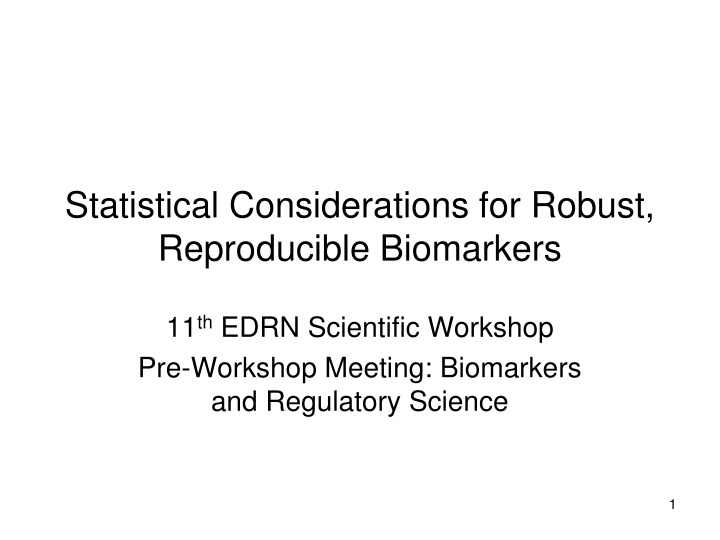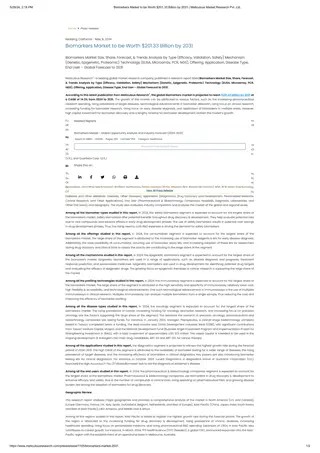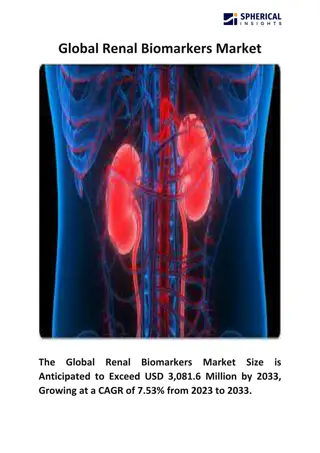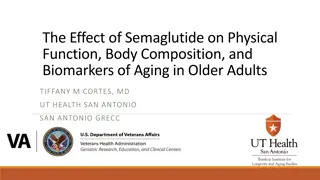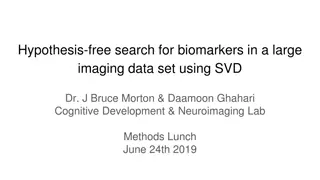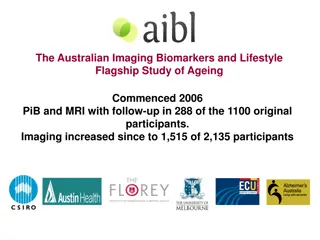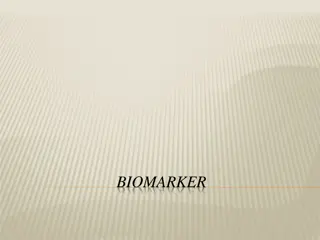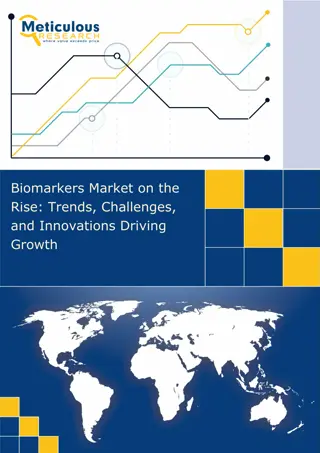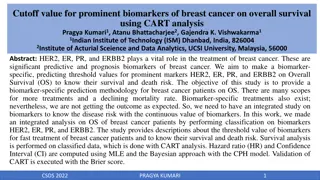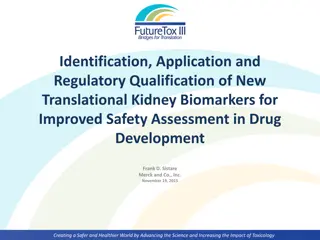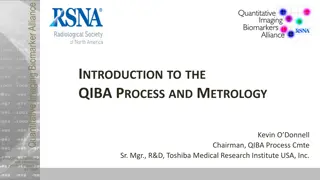Statistical Considerations for Robust, Reproducible Biomarkers
In the realm of biomarker research, ensuring reproducibility and robustness is crucial. This entails identifying consistent biomarkers amidst various challenges like sample size, true biomarker differentiation, biological variability, and measurement accuracy. Through effective triage processes and validation studies, the quest for reliable biomarkers is navigated. Statistical considerations play a pivotal role in each stage - from discovery to validation. Understanding the complexities and nuances of biomarker identification is essential for advancing precision medicine.
Download Presentation

Please find below an Image/Link to download the presentation.
The content on the website is provided AS IS for your information and personal use only. It may not be sold, licensed, or shared on other websites without obtaining consent from the author.If you encounter any issues during the download, it is possible that the publisher has removed the file from their server.
You are allowed to download the files provided on this website for personal or commercial use, subject to the condition that they are used lawfully. All files are the property of their respective owners.
The content on the website is provided AS IS for your information and personal use only. It may not be sold, licensed, or shared on other websites without obtaining consent from the author.
E N D
Presentation Transcript
Statistical Considerations for Robust, Reproducible Biomarkers 11thEDRN Scientific Workshop Pre-Workshop Meeting: Biomarkers and Regulatory Science 1
Reproducible - Definition Reproducible means that the same (or substantially similar) set of biomarker candidates are identified in multiple discovery experiments A lab analyzes a set of case/control biospecimens with a methodology (e.g. mass spec for proteins, NGS for miRNAs) and identifies a set of candidate biomarkers How do we know whether the candidate biomarkers are REPRODUCIBLE? Complex dependence on: a. Size of candidate pool 20,000+ proteins, 600 miRNAs b. Number of true biomarkers amongst candidates c. Sample size d. Separation of true biomarkers between cases and controls e. Biological variability of candidates between patients f. Measurement variability of repeated measurements Simulation is one possible approach. Need hypothesis of how many true biomarkers there are and their distribution between cases and controls
Robust - Definition Robust means that biomarker candidate list remains the same (or substantially) similar despite small perturbations in: 1. Case and control populations (e.g. small changes in demographics) 2. Sample collection methods - does the patient have to sit still for 5 minutes before sample is obtained? 3. Processing procedures: e.g. labile plasma proteins prone to degradation within the protocol time frame from collection of blood to centrifugation to obtain plasma are NOT robust 4. Thawing of sample if a smaller volume is required to measure candidates than stored volume 5. Storage conditions More proteins intact over long term when samples stored in LN2 (-196 ) than at -80
Three Topics (focus on statistical considerations) At discovery stage (Phase 1) how to identify robust and reproducible biomarker candidates? Effective triage process (Phase 2) leading to robust and reproducible biomarkers Phase 3 Validation study for safety, effectiveness (FDA), clinical utility (CMS) 4
At discovery stage (Phase 1) how to identify robust and reproducible biomarker candidates? Discovery power discovery studies under powered miss good candidates false leads Eliminate biases Matching on confounding factors (not just age/gender, e.g. blood collection setting and storage time) Lab procedure, blinding, randomization Early Detection: pre-diagnostic samples for discovery 5
Effective triage process (Phase 2) leading to robust and reproducible biomarkers Clinical application drives study design and everything else if not completely compliant, check possible biases that may cause assay refinement as early as possible Major hurdle: $, infrastructure, incentive early detection: test on pre-diagnostic samples before validation trial 6
Clinical Validation Study (Phase 3) (safety and effectiveness) Lock-down assay, final version Cutoff: which option? Lock-down cutoff, or pre-specify desired sensitivity or specificity without lock-down cutoff Collection and testing sites Population heterogeneity Few collection sites from the target population Can training/test split in each collection site? NO Some collection sites for training, others collection sites for validation Testing sites (few testing sites, different lots, single site device) www.fda.gov/regulatory-information/search-fda-guidance-documents/design- considerations-pivotal-clinical-investigations-medical-devices 7
Selection of Samples for Clinical Validation Study Prospectively Obtained Samples Pre-specified protocol for the clinical validation study (target population) Inclusion/exclusion criteria Samples/subjects are from the target population of the IVD test Measures of the clinical performance (e.g., clinical sensitivity, specificity, ..) are UNBIASED. Time of testing: maybe be collected and tested immediately (according to Instructions for Use) stored prior to being tested (according to the claimed sample stability)
Selection of Samples for Clinical Validation Study Archived Samples Without pre-specified protocol or/and Protocol for different study Additional Challenges Samples may be non-representative of the target population (e.g, left-over of large tumors, no samples near the cutoff because of re-testing, not enough sample volume, ) Inclusion of samples positive by another IVD test Storage of samples (stability): especially challenging for new biomarkers; storage outside of the claimed sample stability
Clinical Validation Study (Phase 3) Early Detection: archived/prospectively collected samples Can archived samples be used for clinical validation study when clinical application uses fresh samples? YES If YES, what are required to do? Address possible biases Stability of samples!!! Changing storage conditions Bridging study between fresh and frozen samples If potentials for possible biases and stability issues are adequately addressed, archived samples can provide unbiased estimates of the performance and, therefore, can be used.
